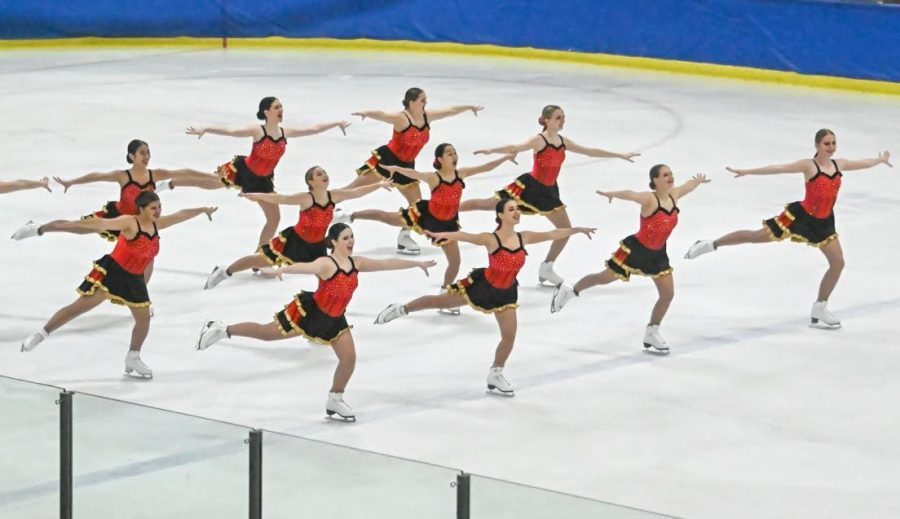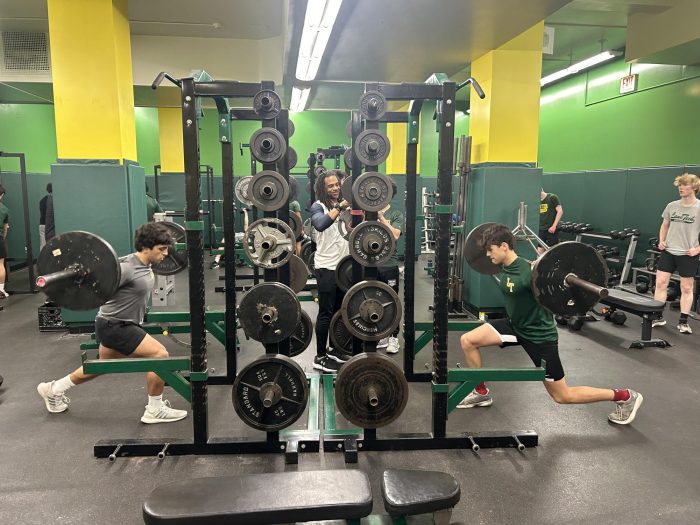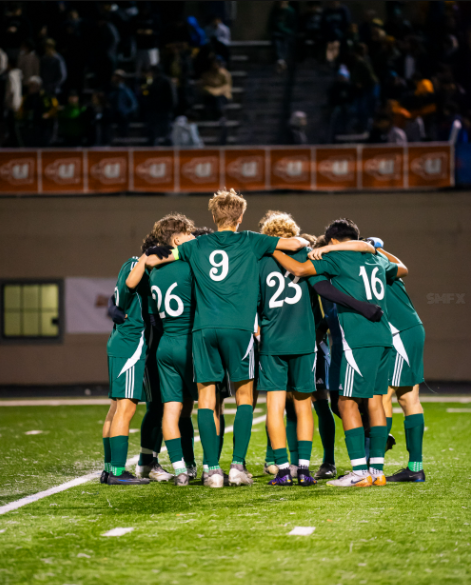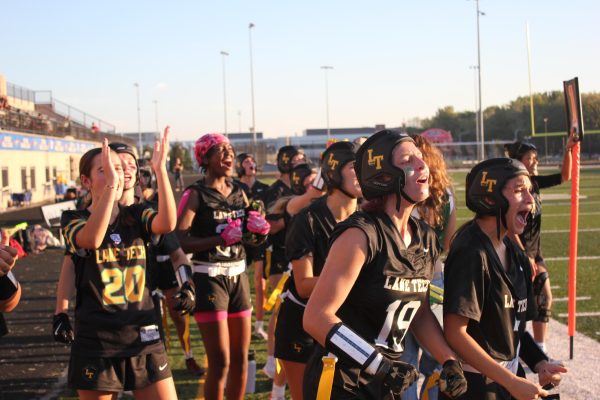Lane Tech on ice: Lane’s synchronized skaters
When someone says “ice skating,” people typically think of a single skater on the ice, doing crazy jumps in the air and spinning on one foot. Most wouldn’t think of competing with a team of 16 people, all over the world, doing different types of configurations and elements employed to win gold. This is known as synchronized skating.
Lane Tech senior Elise Borelli, who has been a synchronized skater for 10 years, never would have thought she would be flying across the Atlantic Ocean to compete with Team USA in the United Kingdom as a senior in high school.
“The rink we were skating in had all the flags of all the countries that were there,” Borelli said. “I was just there practicing, and when I looked up and I saw all of the flags, I was like wow that is actually so cool. It was really surreal.”
Borelli and her team competed on the weekend of Jan. 14 at the Britannia Cup and ended up taking home the bronze medal with a third place overall finish, but competitions are not all about winning, Borelli said.
“I think just being with my teammates is what I enjoy the most,” Borelli said. “Sure, competitions are nice, and succeeding and getting first, but it’s mainly just the team bonding and things like that.”
Freshman Lexie Antoine, also a synchronized skater, agrees.
“My favorite part is getting to be a part of big competitions where people come from all over the place and it’s like a really great experience,” she said. “It brings me joy to know that I’m part of a bigger puzzle, and I’ve just had a lot of great experiences making friends.”
Synchronized skating allows skaters to feel like a part of a community that connects them all. According to US Figure Skating, there are a total of 18 different levels with three categories within synchronized skating: aspire, developmental levels, and competitive levels. Competitive levels consist of junior and senior teams, which can represent Team USA and travel around the world.
Borelli said being on such a high level team (junior) has made her high school experience different from others.
“It’s completely different from what I used to do, where it’s a lot more serious [now], but also they’re always there to support you, and I do feel a lot of support,” Borelli said “It is a lot more serious and a lot more work, and I definitely miss a lot more school, so that’s a bit stressful, but most of my teachers are very understanding about it.”
She shares how since everyone on her team is in high school, she feels like everyone is feeling the same way she does.
Junior Nadia Pesch has participated in synchronized skating for nine seasons and it still remains a huge part of her life.
“Being with so many people that you are so close with is just so fun and just like that feeling of knowing your hard work paid off is just so amazing,” she said. “You get to skate with your friends and it’s like your little family.”
Synchronized skating, like any other team sport, revolves around the idea of sportsmanship and togetherness.
“It just made me a very accountable and reliable and hardworking person,” Borelli said. “It’s like a sport and you want to do well for your teammates so I’ll always try harder to do better for them.”
Synchronized Skating has allowed skaters to build relationships through skating and develop an environment where people can be a part of a team and connect with other skaters in competitions across the world.
“Synchro is just different because you have a built in support system and it’s really fun and I think that skating synchro changed my life, honestly,” Pesch said.
Your donations directly fund the Lane Tech student journalism program—covering essential costs like website hosting and technology not supported by our school or district. Your generosity empowers our student reporters to investigate, write, and publish impactful stories that matter to our school community.
This website is more than a publishing platform—it's an archive, a research tool, and a source of truth. Every dollar helps us preserve and grow this resource so future students can learn from and build on the work being done today.
Thank you for supporting the next generation of journalists at Lane Tech College Prep!

Leah is a junior, and this is her first year with the Champion. In her free time she enjoys ice skating, playing guitar, hanging out with friends, reading,...




